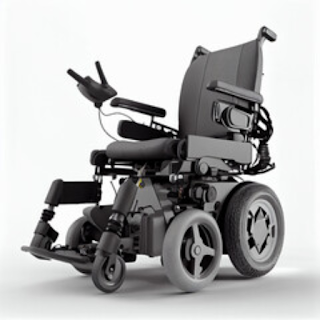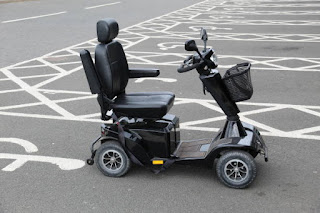Addressing Common Challenges Faced by Power Wheelchair Users and Finding Solutions
Introduction
Power wheelchairs have become a vital means of mobility for individuals with physical disabilities, granting them independence and enhancing their quality of life. However, power wheelchair users often encounter various challenges in their daily lives that can hinder their freedom and limit their accessibility. In this blog post, we will explore some of the common challenges faced by power wheelchair users and highlight innovative solutions that aim to address these obstacles, promoting inclusivity and empowering individuals to navigate the world with ease.
Limited Accessibility
One of the primary challenges power wheelchair users face is limited accessibility in public spaces. Uneven surfaces, narrow doorways, steep ramps, and inadequate signage can pose significant obstacles. To address this issue, governments and organizations are implementing universal design principles, which involve designing spaces, buildings, and infrastructure to be accessible to all individuals, regardless of their mobility needs. This includes installing ramps, widening doorways, adding tactile paving, and providing clear signage to ensure equal access for electric wheelchair users.
Transportation Limitations
Transportation can be a major hurdle for users of power wheelchairs, especially when public transportation systems are not adequately equipped to accommodate their needs. However, many cities are actively working on improving accessibility in public transportation. This includes providing accessible buses and trains with ramps or lifts, designated spaces for wheelchair users, and ensuring proper training for transportation staff to assist individuals with disabilities. Additionally, ridesharing services that offer wheelchair-accessible vehicles are becoming more prevalent, providing greater mobility options for power wheelchair users.
Inadequate Home Modifications
Another challenge faced by power wheelchair users is the lack of appropriate home modifications. Homes with narrow hallways, high thresholds, and inaccessible bathrooms can impede independent living. However, individuals can seek assistance from occupational therapists and accessibility experts who can assess their homes and recommend modifications, such as widening doorways, installing stair lifts or ramps, and adapting bathrooms with grab bars and roll-in showers. Additionally, technological advancements like smart home automation can further enhance accessibility, allowing users to control various aspects of their living environment with ease.
Social Stigma and Attitudinal Barriers
Power wheelchair users often face social stigma and attitudinal barriers that can hinder their participation in society. Negative attitudes, misconceptions, and ignorance about disability can lead to exclusion and limited opportunities. Education and awareness campaigns play a crucial role in challenging stereotypes and promoting inclusivity. By fostering a culture of empathy, acceptance, and understanding, we can create an environment where motorized wheelchair users are treated with respect and given equal opportunities to engage in all aspects of life.
Maintenance and Repairs
Power wheelchairs are complex machines that require regular maintenance and occasional repairs. Delays in servicing or a lack of accessible repair facilities can be frustrating for users. To address this challenge, manufacturers and distributors are striving to improve their customer support services, providing accessible and timely maintenance and repair options. Additionally, the availability of online resources and communities enables users to troubleshoot common issues themselves, empowering them to maintain their power wheelchairs and minimize downtime.
Conclusion
While users of power wheelchairs face various challenges in their daily lives, there are promising solutions being implemented to address these obstacles. From universal design principles and improved accessibility in public transportation to home modifications and awareness campaigns, efforts are being made to create a more inclusive society. By addressing the unique needs of power wheelchair users and fostering a supportive environment, we can empower individuals to overcome barriers, maximize their independence, and fully participate in all aspects of life. It is through these collective efforts that we can build a more accessible and inclusive world for all.
One of the primary challenges power wheelchair users face is limited accessibility in public spaces. Uneven surfaces, narrow doorways, steep ramps, and inadequate signage can pose significant obstacles. To address this issue, governments and organizations are implementing universal design principles, which involve designing spaces, buildings, and infrastructure to be accessible to all individuals, regardless of their mobility needs. This includes installing ramps, widening doorways, adding tactile paving, and providing clear signage to ensure equal access for electric wheelchair users.
Transportation Limitations
Transportation can be a major hurdle for users of power wheelchairs, especially when public transportation systems are not adequately equipped to accommodate their needs. However, many cities are actively working on improving accessibility in public transportation. This includes providing accessible buses and trains with ramps or lifts, designated spaces for wheelchair users, and ensuring proper training for transportation staff to assist individuals with disabilities. Additionally, ridesharing services that offer wheelchair-accessible vehicles are becoming more prevalent, providing greater mobility options for power wheelchair users.
Inadequate Home Modifications
Another challenge faced by power wheelchair users is the lack of appropriate home modifications. Homes with narrow hallways, high thresholds, and inaccessible bathrooms can impede independent living. However, individuals can seek assistance from occupational therapists and accessibility experts who can assess their homes and recommend modifications, such as widening doorways, installing stair lifts or ramps, and adapting bathrooms with grab bars and roll-in showers. Additionally, technological advancements like smart home automation can further enhance accessibility, allowing users to control various aspects of their living environment with ease.
Social Stigma and Attitudinal Barriers
Power wheelchair users often face social stigma and attitudinal barriers that can hinder their participation in society. Negative attitudes, misconceptions, and ignorance about disability can lead to exclusion and limited opportunities. Education and awareness campaigns play a crucial role in challenging stereotypes and promoting inclusivity. By fostering a culture of empathy, acceptance, and understanding, we can create an environment where motorized wheelchair users are treated with respect and given equal opportunities to engage in all aspects of life.
Maintenance and Repairs
Power wheelchairs are complex machines that require regular maintenance and occasional repairs. Delays in servicing or a lack of accessible repair facilities can be frustrating for users. To address this challenge, manufacturers and distributors are striving to improve their customer support services, providing accessible and timely maintenance and repair options. Additionally, the availability of online resources and communities enables users to troubleshoot common issues themselves, empowering them to maintain their power wheelchairs and minimize downtime.
Conclusion
While users of power wheelchairs face various challenges in their daily lives, there are promising solutions being implemented to address these obstacles. From universal design principles and improved accessibility in public transportation to home modifications and awareness campaigns, efforts are being made to create a more inclusive society. By addressing the unique needs of power wheelchair users and fostering a supportive environment, we can empower individuals to overcome barriers, maximize their independence, and fully participate in all aspects of life. It is through these collective efforts that we can build a more accessible and inclusive world for all.


.jpg)

Comments
Post a Comment